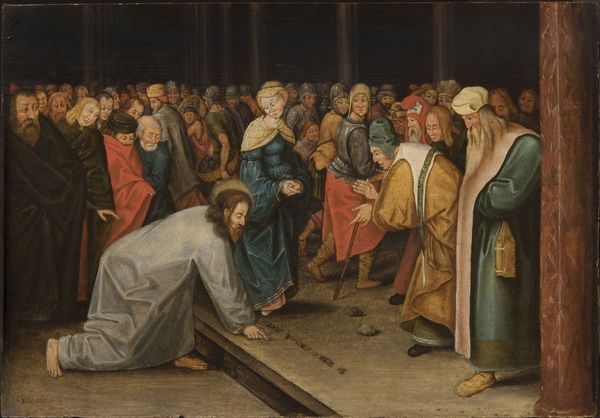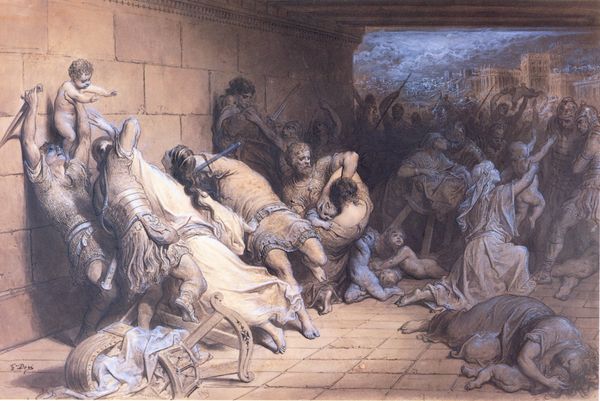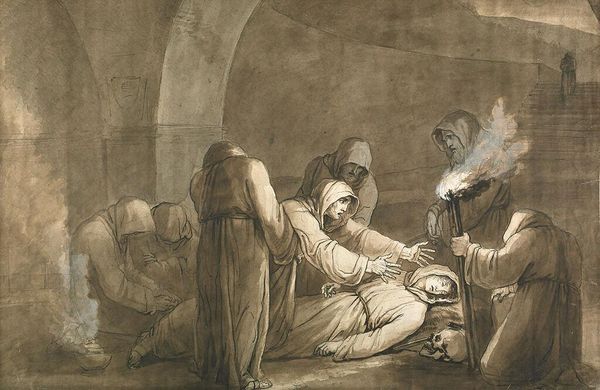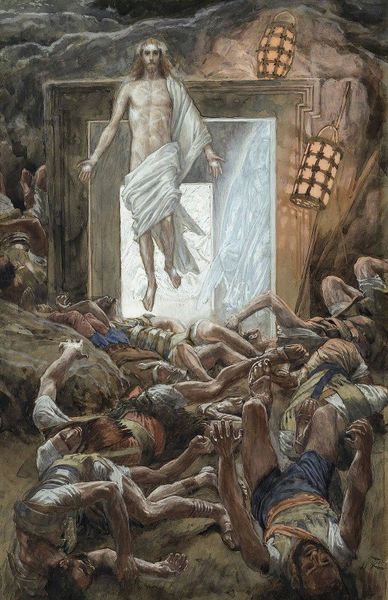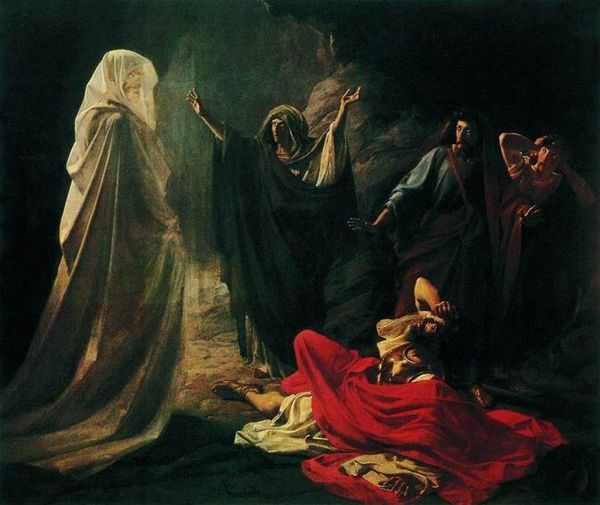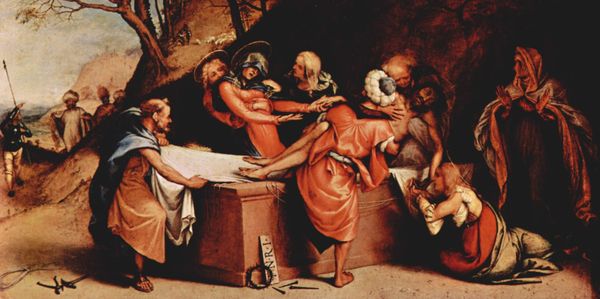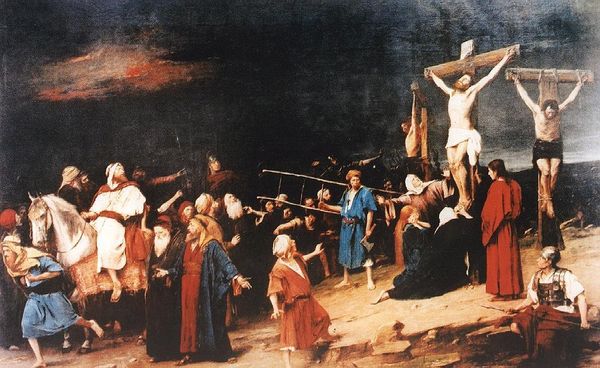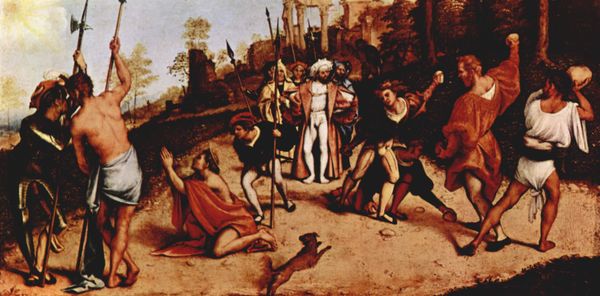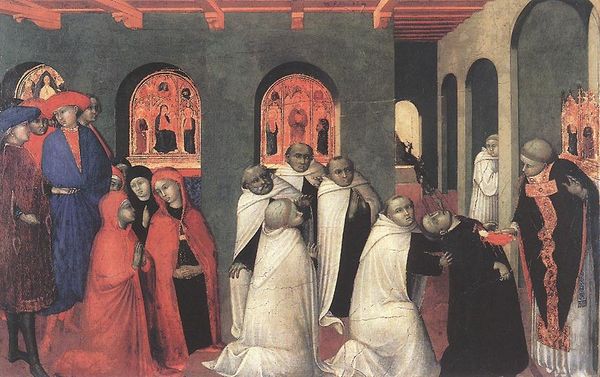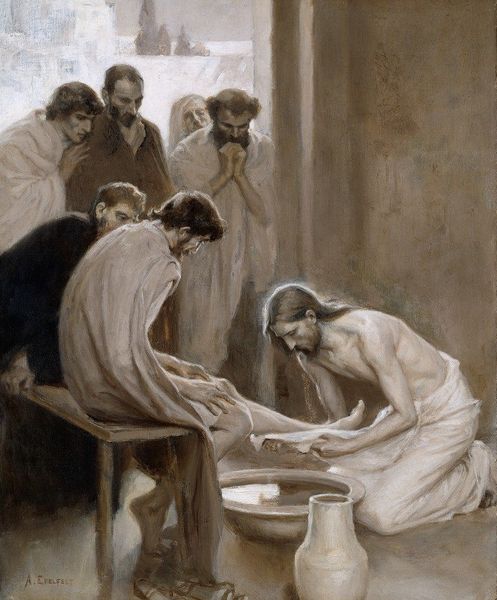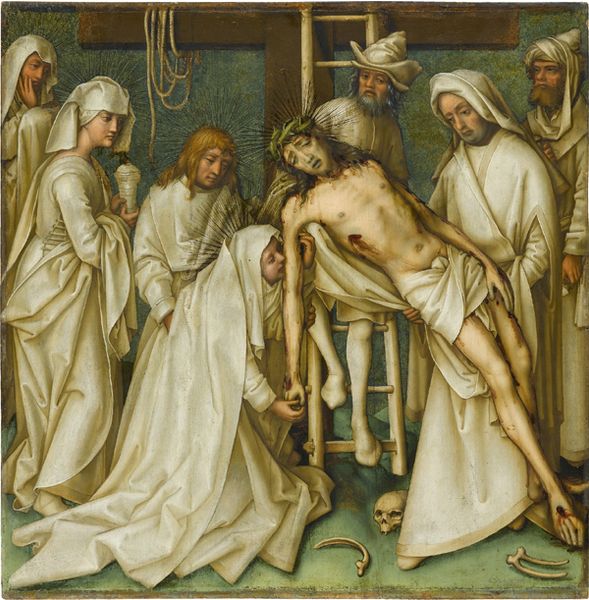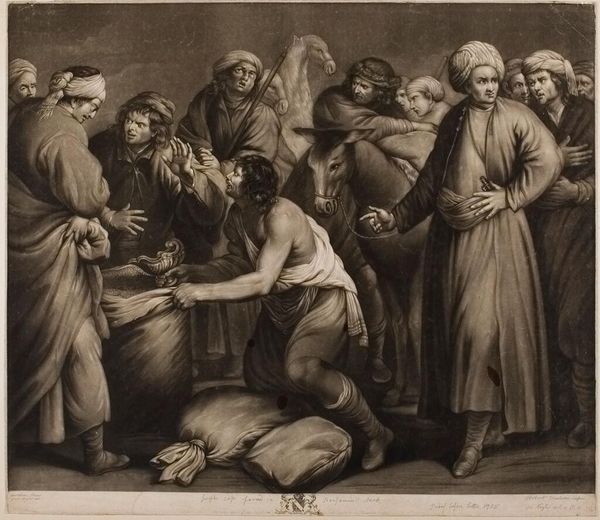
painting, oil-paint
#
narrative-art
#
painting
#
oil-paint
#
charcoal drawing
#
figuration
#
11_renaissance
#
oil painting
#
jesus-christ
#
christianity
#
genre-painting
#
history-painting
#
northern-renaissance
Dimensions: 24 x 34 cm
Copyright: Public domain
Editor: So, this is Pieter Bruegel the Elder's "Christ and the Woman Taken in Adultery" from 1565, painted in oil. It’s remarkable how he renders such a potent moment with such subdued color; everything's in shades of grey. How do you interpret this work? Curator: Bruegel powerfully subverts the typical heroic depictions of biblical scenes, doesn't he? He uses a muted palette, almost monochrome, drawing our attention away from spectacle and towards the dynamics of power and judgement. Consider the woman herself, positioned almost centrally, but passive. Bruegel critiques the very act of public shaming, asking us to question who holds the power and whose voices are silenced. What do you notice about the gaze of the crowd? Editor: They seem... almost voyeuristic? There's a palpable sense of judgement, but also a kind of perverse curiosity. Curator: Precisely. Bruegel’s brilliance lies in exposing the complicity of the crowd. He forces us to confront how societal structures – then, and perhaps even now – perpetuate cycles of blame and punishment, especially aimed at women. Where do you think Bruegel positions himself within this scene? As an observer, or a participant? Editor: Probably an observer, judging by the slightly detached way everyone is painted. But that almost makes the viewer a participant because it is like we are also part of this crowd. Curator: Exactly! And what does it mean that Christ is not elevated or centered, but rather blends in, head bowed, writing in the dust? Bruegel rejects a simplistic hero narrative, instead emphasizing the importance of empathy and challenging the established authority. Editor: It's amazing how much Bruegel critiques social structures through a biblical scene. Curator: Absolutely, and it reminds us that art has always been, and continues to be, a space for challenging norms and advocating for social justice.
Comments
No comments
Be the first to comment and join the conversation on the ultimate creative platform.
